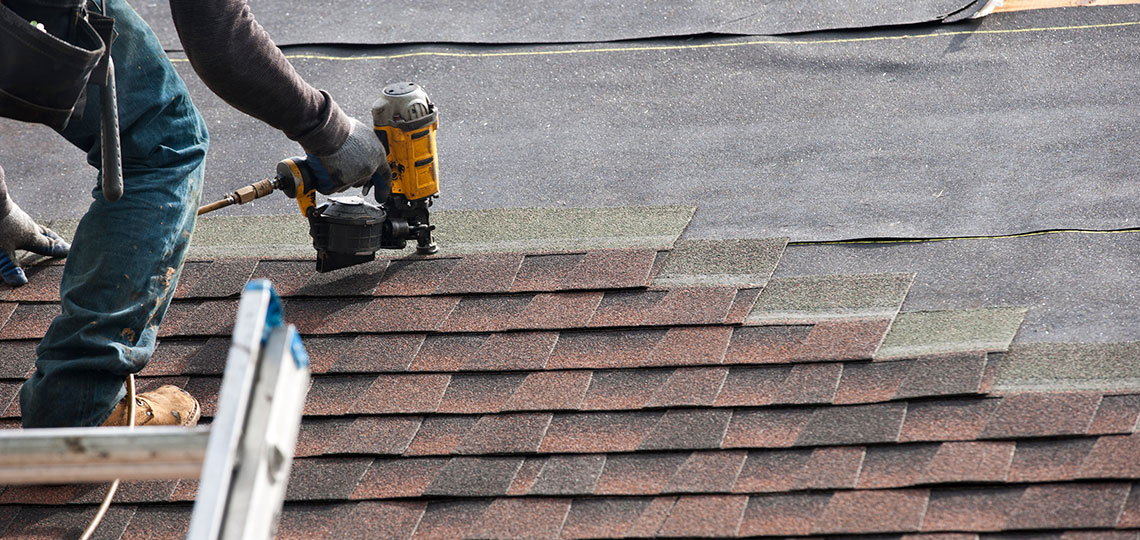Comparing Prices Among Roofing Companies in Gainesville Florida
Comparing Prices Among Roofing Companies in Gainesville Florida
Blog Article
Ideal Practices for Ensuring Proper Roof Covering Air Flow
A balanced consumption and exhaust vent proportion, commonly 1:300, plays a crucial role, with intake vents preferably put at the reduced side of the roof for cool air entry and exhaust vents at the peak for cozy air exit. Maintaining insulation away from vents is vital to prevent airflow limitation.
Understand Ventilation Basics
Appropriately comprehending ventilation fundamentals is important for ensuring the durability and effectiveness of roofing systems. Efficient air flow alleviates moisture accumulation and temperature level extremes in the attic, both of which can result in considerable architectural damage over time. A well-ventilated roofing helps in avoiding typical issues such as mold and mildew development, wood rot, and ice dams, which can endanger the honesty of the roof products and the underlying frameworks.
The key goal of air flow is to assist in the movement of air, permitting for a regular exchange between the indoor and exterior environments. This equilibrium is attained via a combination of intake and exhaust vents that collaborate to preserve optimum air movement. Consumption vents, commonly located along the eaves or soffits, allow fresh air to go into the attic space, while exhaust vents, often located at or near the roofing system ridge, make it possible for hot, moist air to get away.
Key factors affecting the efficiency of roof covering air flow include correct placement, adequate sizing, and making certain that both intake and exhaust vents are unhampered. Routine inspection and upkeep are critical to recognize prospective blockages, damages, or inefficiencies in the air flow system, consequently safeguarding the roofing system's efficiency and resilience.
Types of Roofing Vents
Roof vents play a crucial function in keeping reliable attic ventilation and, by extension, the overall health of the roofing system. Various kinds of roof vents are readily available, each with one-of-a-kind advantages tailored to particular roof covering needs. Ridge vents, for instance, are set up along the roof's peak, allowing warm, moist air to leave from the attic. They use continuous ventilation and blend flawlessly with the roofline, making them both effective and visually pleasing.

Soffit vents are mounted under the eaves and work in tandem with roof covering vents to guarantee a well balanced intake and exhaust system. By enabling cooler air to get in from below, soffit vents help with the expulsion of warm air through top vents. Gable vents, situated on the exterior walls of the attic room, deal one more reliable solution, specifically in homes with gable roofings.
Evaluate Your Present Air Flow

Next, take into consideration the age and condition of your roof covering products and ventilation components. Older systems might not adhere to existing building regulations or may have degraded in time, decreasing their performance. Conduct a detailed assessment to determine any kind of indicators of deterioration, such as corrosion, damage, or gaps that can jeopardize the system's efficiency.
Additionally, determine the attic temperature and humidity degrees. Heats and moisture can show insufficient air flow - roofing companies. Use a hygrometer and thermometer to get exact analyses, comparing them with outside conditions. Relentless inconsistencies recommend prospective problems that require addressing.
Installment Best Practices
Effective installation of roofing ventilation systems is paramount for guaranteeing ideal performance and durability. Appropriate installment begins with recognizing the specific ventilation requirements of the roof and the building it covers. This involves determining the proper proportion of consumption to wear down vents, generally adhering to the 1:300 policy, which states one square foot of ventilation for every 300 square feet of attic floor room.

Intake vents should be mounted at the roofing system's reduced edge, typically in the soffits, to permit awesome air to go into. Exhaust vents, on the various other hand, need to be installed near or at the roofing system's peak to promote the exit of warm, damp air.
Seal all air vent links meticulously to avoid air leakages and possible water seepage. Usage premium products and adhere to supplier guidelines to guarantee longevity and effectiveness. Additionally, incorporating ridge vents with baffles can dramatically improve air navigate to these guys flow performance by stopping wind-driven rain and snow from entering the attic.
Eventually, accurate setup of roof ventilation systems mitigates prospective problems such as mold development, ice dams, and structural damage, ensuring the roof's honesty and the structure's total health and wellness.
Regular Maintenance Tips
Consistency in upkeep practices is fundamental to ensuring the long-lasting efficiency of roofing ventilation systems. Throughout these inspections, make sure that vents are complimentary of debris, nests, and various other obstructions that can impede air flow.
Cleaning the vents is another vital task. Utilize a soft brush or a vacuum to eliminate dust and particles from intake and exhaust vents. Beware not to damage the air vent screens or louvers during the procedure. Furthermore, inspect the attic space for any indications of water damages, which could compromise the honesty of the roof.
Appropriate insulation is just as important. Make certain that attic insulation does not obstruct the vents, as this can severely restrict air movement. If any insulation has moved or settled, reposition or change it to keep a reliable barrier.
Lastly, replace any type of damaged or missing out on parts promptly. Broken vents, split tiles, or deteriorated flashing can all add to poor air flow and needs to be dealt with right away. Normal upkeep ensures that the roofing ventilation system functions optimally, thus expanding the life-span of the roof covering itself.
Final Thought
Ensuring correct roof ventilation is paramount for preserving the effectiveness and toughness of a roofing system. Adherence to the 1:300 intake and exhaust air vent proportion, combined with the strategic placement of vents, is crucial.
A well balanced consumption and exhaust vent ratio, frequently 1:300, plays an essential role, with consumption vents preferably positioned at the reduced side of the roof for great air entry and exhaust vents at the peak for warm air departure. Consumption vents, generally located along the soffits or eaves, allow fresh air to enter the attic area, while exhaust vents, usually situated at or near the roofing system ridge, allow warm, moist air to escape.
Soffit vents are set up under the eaves and work in tandem Visit This Link with roofing vents to ensure a balanced intake and exhaust system. By enabling cooler air to go into from below, soffit vents assist in the expulsion of warm air via top vents. Adherence to the 1:300 consumption and exhaust air vent proportion, paired with the critical positioning of vents, is essential.
Report this page